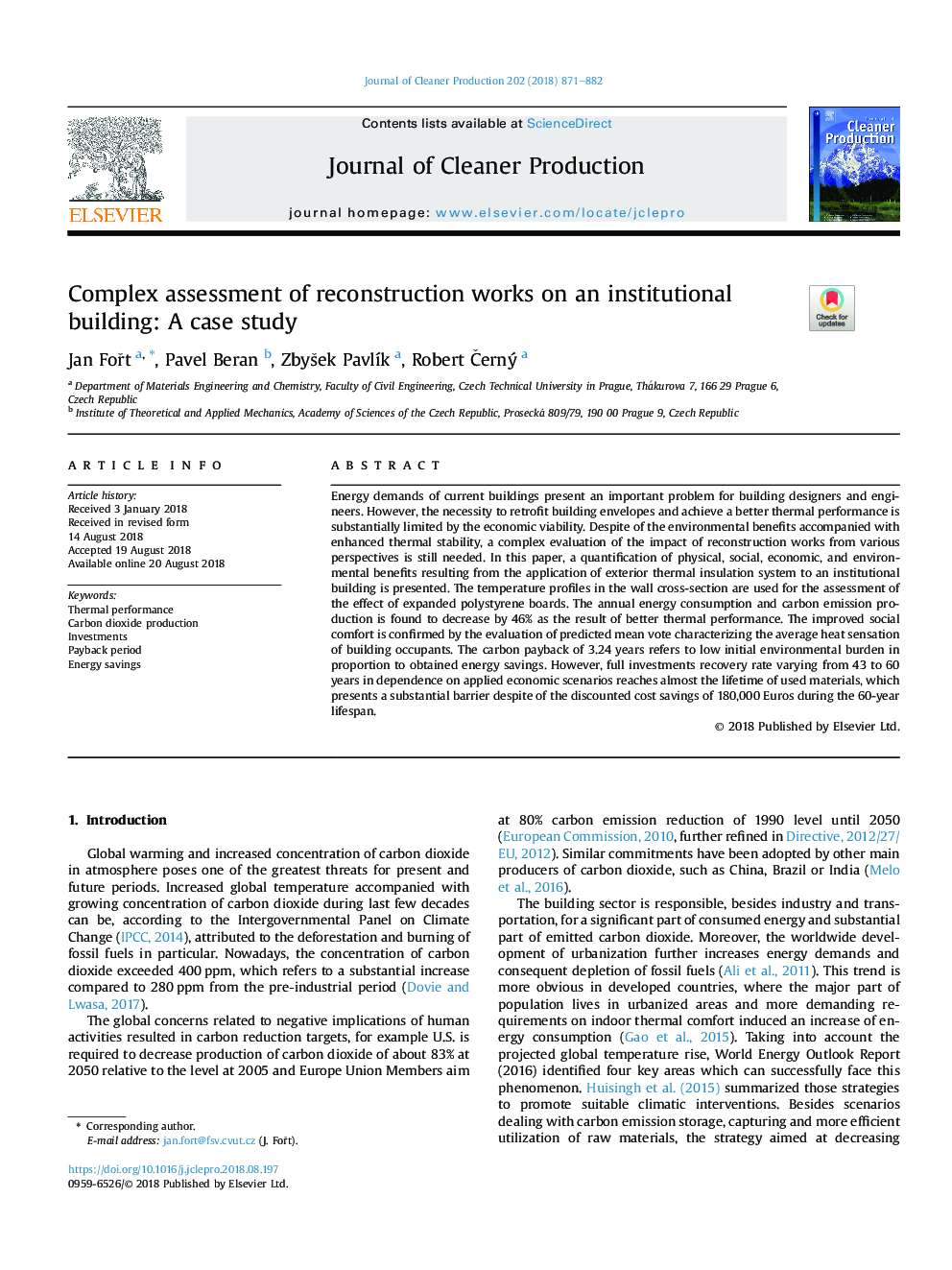| Article ID | Journal | Published Year | Pages | File Type |
|---|---|---|---|---|
| 8948875 | Journal of Cleaner Production | 2018 | 12 Pages |
Abstract
Energy demands of current buildings present an important problem for building designers and engineers. However, the necessity to retrofit building envelopes and achieve a better thermal performance is substantially limited by the economic viability. Despite of the environmental benefits accompanied with enhanced thermal stability, a complex evaluation of the impact of reconstruction works from various perspectives is still needed. In this paper, a quantification of physical, social, economic, and environmental benefits resulting from the application of exterior thermal insulation system to an institutional building is presented. The temperature profiles in the wall cross-section are used for the assessment of the effect of expanded polystyrene boards. The annual energy consumption and carbon emission production is found to decrease by 46% as the result of better thermal performance. The improved social comfort is confirmed by the evaluation of predicted mean vote characterizing the average heat sensation of building occupants. The carbon payback of 3.24 years refers to low initial environmental burden in proportion to obtained energy savings. However, full investments recovery rate varying from 43 to 60 years in dependence on applied economic scenarios reaches almost the lifetime of used materials, which presents a substantial barrier despite of the discounted cost savings of 180,000 Euros during the 60-year lifespan.
Related Topics
Physical Sciences and Engineering
Energy
Renewable Energy, Sustainability and the Environment
Authors
Jan FoÅt, Pavel Beran, ZbyÅ¡ek PavlÃk, Robert Äerný,
